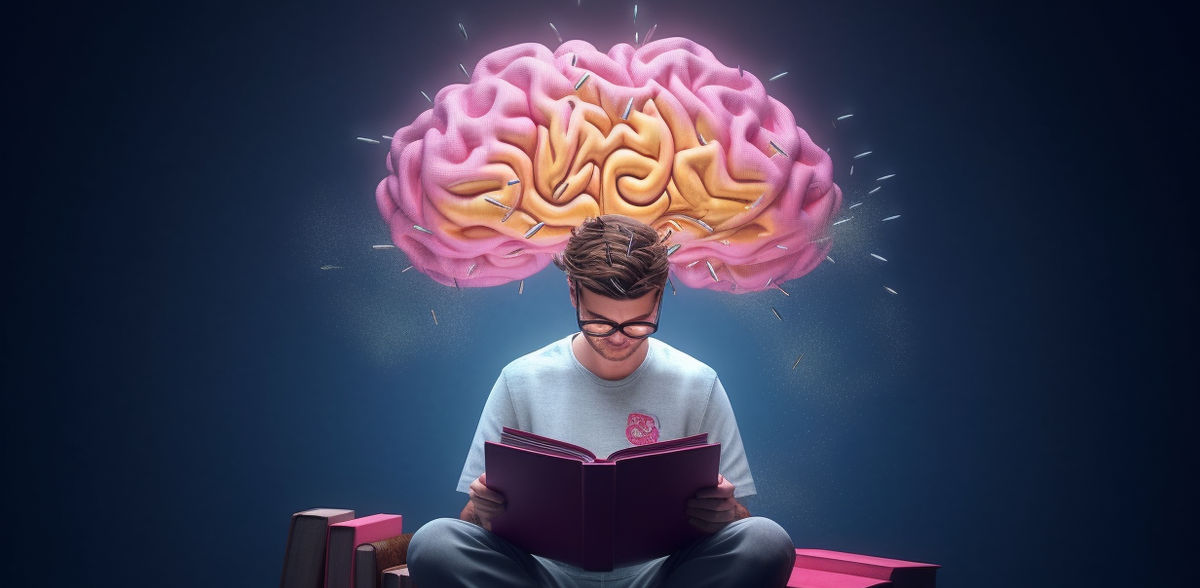Do intelligent people think faster?
Findings are interesting for treatment planning
Researchers at the BIH and Charité – Universitätsmedizin Berlin, together with a colleague from Barcelona, made the surprising finding that participants with higher intelligence scores were only quicker when tackling simple tasks, while they took longer to solve difficult problems than subjects with lower IQ scores. In personalized brain simulations of the 650 participants, the researchers could determine that brains with reduced synchrony between brain areas literally “jump to conclusions” when making decisions, rather than waiting until upstream brain regions could complete the processing steps needed to solve the problem.
In fact, the brain models for higher score participants also needed more time to solve challenging tasks but made fewer errors. The scientists have now published their findings in the journal Nature Communications.
There are 100 billion or so neurons in the human brain. Each one of them is connected to an estimated 1,000 neighboring or distant neurons. This unfathomable network is the key to the brain’s amazing capabilities, but it is also what makes it so difficult to understand how the brain works.
Prof. Petra Ritter, head of the Brain Simulation Section at the Berlin Institute of Health at Charité (BIH) and at the Department of Neurology and Experimental Neurology of Charité – Universitätsmedizin Berlin, simulates the human brain using computers. “We want to understand how the brain’s decision-making processes work and why different people make different decisions,” she says, describing the current project.
Personalized brain models
To simulate the mechanisms of the human brain, Ritter and her team use digital data from brain scans like magnetic resonance imaging (MRI) as well as mathematical models based on theoretical knowledge about biological processes. This initially results in a “general” human brain model. The scientists then refine this model using data from individual people, thus creating “personalized brain models.”
For the present study, the scientists worked with data from 650 participants of the Human Connectome Project, a U.S. initiative that has been studying neural connections in the human brain since September 2010. “It’s the right excitation-inhibition balance of neurons that influences decision-making and more or less enables a person to solve problems,” explains Ritter. Her team knew how participants fared on extensive cognitive tests and what their IQ scores were.
Artificial brains behave like their biological counterparts
“We can reproduce the activity of individual brains very efficiently,” says Ritter. “We found out in the process that these in silico brains behave differently from one another – and in the same way as their biological counterparts. Our virtual avatars match the intellectual performance and reaction times of their biological analogues.”
Interestingly, the “slower” brains in both the humans and the models were more synchronized, i.e., in time with one other. This greater synchrony allowed neural circuits in the frontal lobe to hold off on decisions longer than brains that were less well coordinated. The models revealed how reduced temporal coordination results in the information required for decision-making neither being available when needed nor stored in working memory.
Gathering evidence takes time – and leads to correct decisions
Resting-state functional MRI scans showed that slower solvers had higher average functional connectivity, or temporal synchrony, between their brain regions. In personalized brain simulations of the 650 participants, the researchers could determine that brains with reduced functional connectivity literally “jump to conclusions” when making decisions, rather than waiting until upstream brain regions could complete the processing steps needed to solve the problem.
Participants were asked to identify logical rules in a series of patterns. These rules became increasingly complex with each task and thus more difficult to decipher.In everyday terms, an easy task would consist of quickly braking at a red light, while a hard task would require methodically working out the best route on a road map. In the model, a so-called winner-take-all competition occurs between different neural groups involved in a decision, with the neural groups for which there is stronger evidence prevailing. Yet in the case of complex decisions, such evidence is often not clear enough for quick decision-making, literally forcing the neural groups to jump to conclusions.
“Synchronization, i.e., the formation of functional networks in the brain, alters the properties of working memory and thus the ability to ‘endure’ prolonged periods without a decision,” explains Michael Schirner, lead author of the study and a scientist in Ritter’s lab. “In more challenging tasks, you have to store previous progress in working memory while you explore other solution paths and then integrate these into each other. This gathering of evidence for a particular solution may sometimes takes longer, but it also leads to better results. We were able to use the model to show how excitation-inhibition balance at the global level of the whole brain network affects decision-making and working memory at the more granular level of individual neural groups.”
Findings are interesting for treatment planning
Ritter is pleased that the results observed in the computer-based “brain avatars” match the results seen in “real” healthy subjects. After all, her main interest is in helping patients affected by neurodegenerative diseases like dementia and Parkinson’s disease. “The simulation technology used in this study has made significant strides, and can be used to improve personalized in silico planning of surgical and drug interventions as well as therapeutic brain stimulation. For example, a physician can already use a computer simulation to assess which intervention or drug might work best for a particular patient and would have the fewest side effects.”





















































